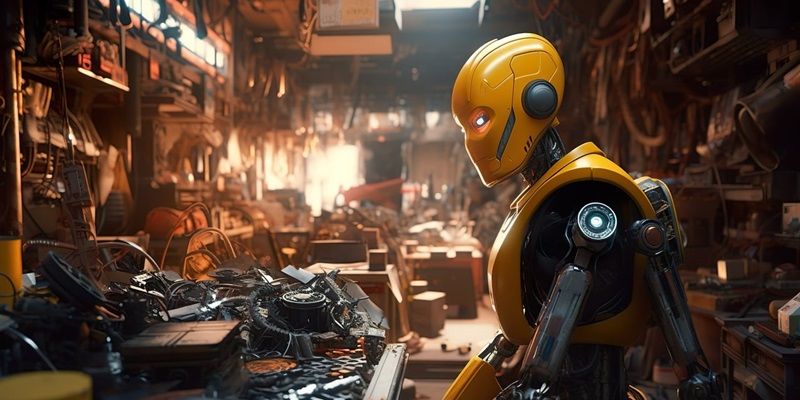In a transformative move for robotics and AI, Covariant has recently announced its pioneering innovation, the RFM-1 (Robotics Foundation Model 1). This revolutionary technology stands at the forefront of the AI revolution, serving as a versatile, all-purpose artificial intelligence with the potential to significantly alter the robotics landscape. The RFM-1 represents a leap toward integrating smart technology into everyday life, promising to deliver adaptable solutions that could redefine how industries and households operate. As robotics and AI inch closer to becoming ubiquitous, Covariant’s RFM-1 may indeed set a new standard, marking a pivotal moment in the journey toward intelligent automation. This AI model is expected not only to streamline a myriad of applications across various sectors but also to pave the way for future advancements in the field.
Redefining Robotics with RFM-1
Covariant’s RFM-1 is not your average robotic software, it’s positioned as the “large language model” equivalent for robots. This new AI platform takes accumulated data to unprecedented levels, allowing machines to venture out of the warehouse and into sectors as diverse as manufacturing, service industries, and possibly our homes. What sets RFM-1 apart is its potential to enable robots to reason and adapt like humans. This includes simulating outcomes before tasks are undertaken, a feature that has been elusive in traditional robotics, where machines perform highly specialized tasks within rigid parameters.
Furthermore, an exciting aspect of RFM-1 is its promise to be hardware-agnostic. This aspect means it can work across a vast array of industrial robotic arms without needing to be customized for each. This characteristic is integral to its universal appeal, allowing RFM-1 to potentially integrate with various robotic systems seamlessly. The inclusion of natural language processing is a nod to user-friendliness, reducing complex programming to simple commands and vastly reducing barriers to robotic integration across industries.
The Potential Impact on Industries
Covariant’s new RFM-1 is poised to reshape the robotics landscape by enabling machines to carry out complex tasks with minimal human guidance. This breakthrough has the potential to streamline operations across various sectors, leveraging robots that respond to natural language instructions. With CEO Peter Chen and Chief Scientist Pieter Abbeel at the helm, Covariant’s innovations carry significant weight, suggesting robust, adaptable robotics might soon be widely accessible.
The RFM-1’s integration with existing systems is a game-changer, offering immediate operational boosts without massive overhauls. This development hints at a transformative phase in robotics, where intelligent, agile machines become integral, versatile assets in countless industries, propelling a seismic shift toward an automated future. The technology’s implications are profound, possibly igniting a revolution where robotics extend beyond mere utility to become dynamic, collaborative partners in diverse human tasks.

